Is the Pacific Crest Trail Right for Your Spring Break Backpacking Adventure? Top 4 Considerations
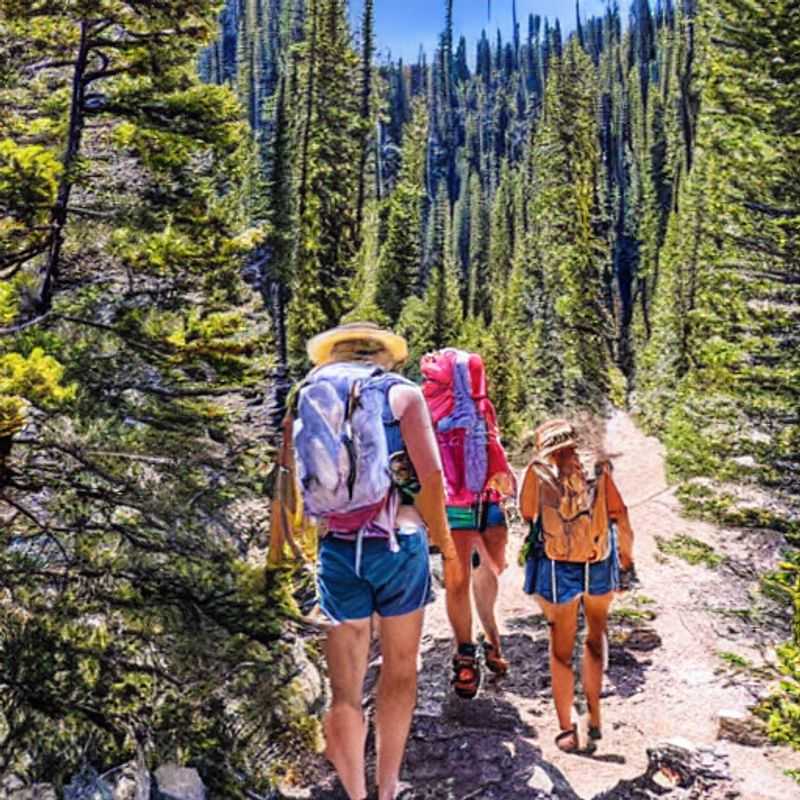
Is the Pacific Crest Trail Safe for 2026? Your Essential USA Travel Guide
Planning a visit to the Pacific Crest Trail (PCT) in the USA for 2026 requires careful consideration of safety, just as with any major outdoor adventure. While the PCT is generally considered safe for hikers, preparedness and awareness are key to a positive experience. Several factors influence safety, including trail conditions, weather patterns, wildlife encounters, and personal preparedness.
In 2026, as in previous years, hikers should expect a range of conditions. Remote sections of the trail can present challenges, and communication can be limited. It is crucial to research specific sections of the trail you plan to hike well in advance, looking for recent reports on snow levels, water availability, and any potential closures or hazards. The PCT Association website is an excellent resource for this information.
Weather is a significant safety consideration. The PCT traverses diverse climates, from scorching deserts to snow-capped mountains. Understanding seasonal weather patterns and being equipped for extreme conditions, including heat, cold, rain, and snow, is paramount. Always check forecasts before and during your hike, and be prepared to alter your plans if necessary.
Wildlife encounters are a reality on the PCT. While most animals are not aggressive, maintaining a safe distance and properly storing food are essential to prevent unwanted interactions. Knowing how to react to encounters with bears, mountain lions, and rattlesnakes can significantly enhance your safety. Carry bear spray in bear country and be aware of your surroundings.
Personal preparedness extends to physical fitness, navigation skills, and carrying the right gear. A well-balanced, lightweight pack with essential survival items, including a first-aid kit, navigation tools, and sufficient water and food, is non-negotiable. Inform someone of your itinerary and expected return time. Solo hikers, in particular, should prioritize safety measures and consider carrying a personal locator beacon (PLB) or satellite messenger for emergencies.
In summary, the Pacific Crest Trail can be a safe and rewarding destination in 2026 with diligent planning and a commitment to safety. Thorough research, appropriate gear, and a healthy respect for nature are your greatest allies for a successful PCT adventure.
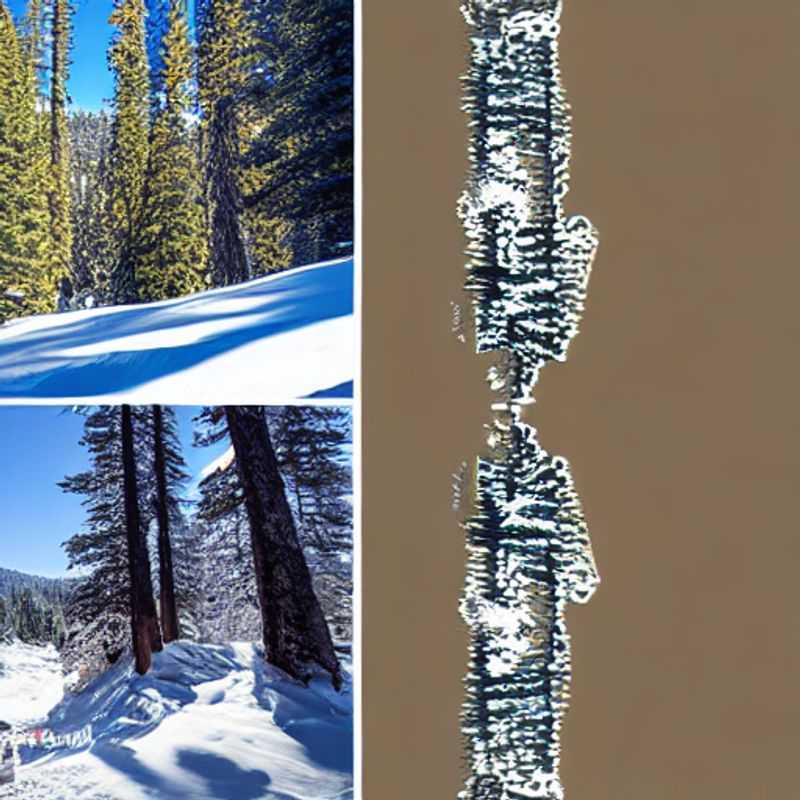
Sun-Kissed Adventures on the Pacific Crest Trail: Spring Break Bliss?
Spring Break Escape: Is the Pacific Crest Trail the Perfect Sun-Soaked Adventure?
Chasing Sunshine on the PCT: A Spring Break Journey You Won't Forget
Pacific Crest Trail Spring Break: My Unexpectedly Magical Adventure
Warm Weather Wonders: Exploring the Pacific Crest Trail This Spring Break
Beyond the Beach: A Spring Break Hike on the Pacific Crest Trail
PCT Spring Break: My Personal Journey of Discovery and Warmth
Trading Tan Lines for Trail Views: A Spring Break Reflection on the Pacific Crest Trail
Under the California Sun: A Spring Break Story from the Pacific Crest Trail
Finding Paradise on the Pacific Crest Trail: Spring Break's Hidden Gem
Hey fellow digital nomads and foodie adventurers! Ready for a Pacific Crest Trail (PCT) adventure, even in winter? While the full PCT trek isn't feasible in winter due to snow, sections in Southern California offer glorious warm weather, perfect for a spring break escape! Think sunshine, stunning scenery, and incredible hiking opportunities.
Let's be clear: winter on the PCT isn't for the faint of heart! But sections in Southern California can offer surprisingly mild weather. Expect average highs in the 60s and 70s Fahrenheit (15-24 Celsius), perfect for day hikes and exploring. The lower elevations are generally accessible, making it a great option for a shorter, warmer adventure.
Food is a major part of any journey and the PCT is no different! While you'll likely be carrying most of your own supplies for longer hikes, nearby towns offer delicious Californian cuisine. Think fresh avocados, seasonal fruits, and vibrant Mexican influences. You can expect to spend around $25-$50 a day on food, depending on your choices. Consider trying local favorites like California burritos or fresh seafood near the coast. Budget about $375-$750 for a week's worth of food.
Transportation is key. You’ll likely need a car to reach trailheads and access towns along the way. Gas costs and parking fees vary, but budget around $50-$100 per week. Public transport options are limited in this area, so a rental car is highly recommended. Factor this into your total transport costs.
The mood along the trail during winter is quiet and peaceful. You'll encounter a mix of serious hikers, dedicated day-trippers, and other adventurous spirits. It's a great opportunity to connect with nature and like-minded people. The sounds of the wind, rustling leaves, and maybe even some local wildlife will be your soundtrack. You might even spot some local wildlife like deer or maybe even a rare bird. The architecture in the nearby towns reflects a blend of Spanish colonial and modern styles, a testament to the region's history.
While specific traditions may vary depending on the specific town you visit near the trail, you'll likely encounter a relaxed, outdoorsy vibe. People are generally friendly and welcoming to visitors. The overall atmosphere is positive and enthusiastic about the beauty of the surroundings. The local music scene often reflects the Californian vibe, mixing elements of folk, country, and rock. Popular plants include desert wildflowers (depending on the season) and various trees adapted to the Southern California climate. Pets are not uncommon, especially dogs joining hikers on the trails.
Estimated total cost for a week-long trip: The total cost for a week-long adventure, including food, transportation, and any potential entry fees for trailheads (if applicable), could range from $500-$1000 or more, depending on your choices and spending habits. Remember, this is just an estimate, and your actual costs may vary. Plan ahead and research thoroughly!
So, pack your bags, fellow digital nomads! This winter escape to the Southern California section of the PCT promises warm weather, delicious food, stunning landscapes, and an unforgettable adventure. Let's explore together!

You may also like
Spring Break Bliss: Ditch the Usual & Hike the Pacific Crest Trail?
Pacific Crest Trail Spring Break: An Unexpected Adventure Awaits!
Sun, Snow, & Serenity: Is the PCT the *Perfect* Spring Break Escape?
Beyond the Beaches: My Pacific Crest Trail Spring Break Revelation
Trading Spring Break Parties for Panoramic Peaks: A PCT Adventure
Spring Break Reimagined: Finding Myself on the Pacific Crest Trail
From Cancun to the Cascades: My Unforgettable PCT Spring Break
Is the Pacific Crest Trail the Hidden Gem of Spring Break Destinations?
Spring Break on the PCT: A Digital Nomad's Unexpected Journey
Escape the Crowds, Embrace the Trails: My PCT Spring Break Story
Hello fellow adventurers! Get ready for an unforgettable winter escape on the Pacific Crest Trail, a journey perfectly blended for the foodie digital nomad. While spring break hotspots are nearby, our focus is on a unique winter experience, away from the usual bustling crowds. Think crisp mountain air, breathtaking scenery, and the quiet hum of nature – perfect for recharging and fueling your creativity.
The weather in winter on the PCT varies significantly depending on elevation and location. Expect snow, ice, and freezing temperatures, especially at higher altitudes. Be prepared for all conditions; this is not a trip for the faint of heart! Layers are your best friend.
Food is a key part of any adventure, and the PCT is no exception. While you'll mostly be relying on your own supplies, you can find some small towns along the trail offering local cafes and restaurants with hearty, warming food. Expect to find classic American fare like hearty stews, chili, and sandwiches. Budget approximately $30-$50 per day for food, depending on your preferences and dietary needs.
The local culture along the PCT is a mix of outdoor enthusiasts, hikers, and the occasional local resident. The atmosphere is generally friendly and supportive, with a strong emphasis on respect for the environment and each other. You'll find a shared love for the outdoors uniting everyone, from seasoned hikers to first-timers.
As for music and sounds, you’ll mainly be serenaded by the quiet rustle of snow, the wind whistling through the pines, and the occasional call of a bird. It's a symphony of tranquility, ideal for creative contemplation and introspection.
The architecture is sparse along the PCT itself; you'll mainly encounter rustic cabins, ranger stations, and small-town buildings. However, nearby towns might offer a glimpse into regional architectural styles, a mix of historic and modern buildings. The natural beauty of the landscape itself is the stunning architecture here.
Popular plants in the winter might include evergreen trees, like pines and firs, their sturdy branches reaching towards the sky. Wildlife is less visible in winter, but you might catch a glimpse of deer or other small animals. Pets are generally allowed on some sections of the trail but always check local regulations before heading out.
Transportation will depend on your starting point and how you plan to access the trail sections you'll be hiking. Expect costs for shuttles, rental cars, or public transport to vary, from $50 to $200 depending on your itinerary.
Gear and equipment will also be a major expense. A good quality backpacking set-up, including a durable tent, sleeping bag rated for freezing temperatures, and reliable hiking boots, will cost around $1000-$1500 depending on your preferences.
Your total trip cost is highly variable depending on your trip length, chosen section of the trail, and the level of comfort you desire. A conservative estimate for a 7-day trip, including food, transportation, and equipment (assuming you already own some equipment), could range from $1500 to $2500. Remember, this is just an estimate and can vary greatly.
Embrace the solitude, the stunning views, and the delicious food along your winter PCT adventure. Enjoy this unique experience! Happy travels!
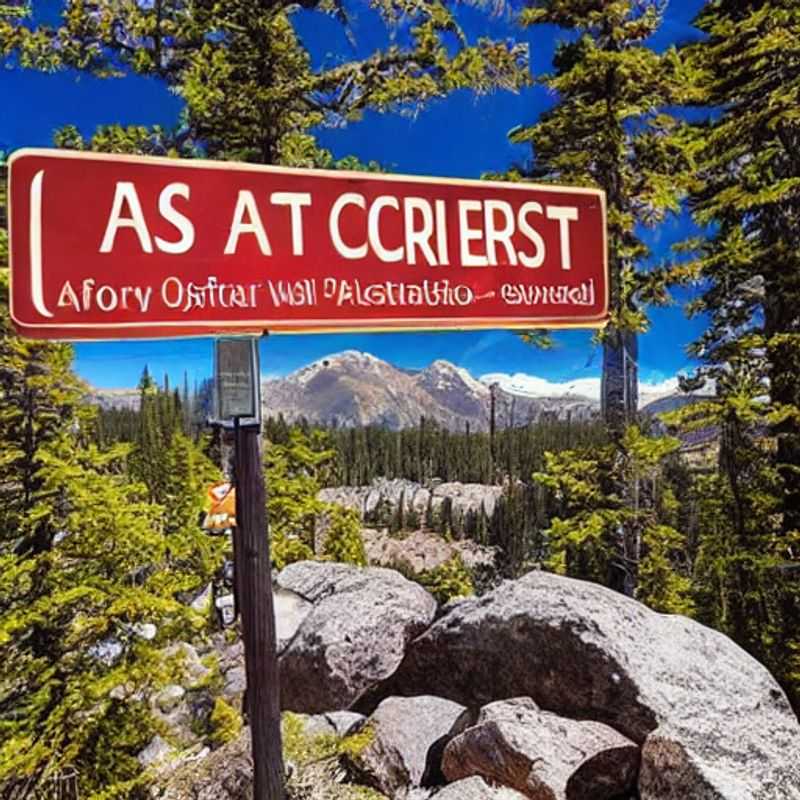
You may also like
Pacific Crest Trail Spring Break: Budget-Friendly Adventure Awaits!
Affordable Pacific Crest Trail: Spring Break on a Shoestring
Is the PCT Right for Your Spring Break Budget? (Spoiler: It Can Be!)
Springtime on the PCT: My Affordable & Unforgettable Journey
Exploring the Pacific Crest Trail on a Spring Break Budget: Tips & Tricks
PCT Spring Break: Luxury on a Backpacker's Budget
My Pacific Crest Trail Spring Break: Discovering Affordable Beauty
Budget-Friendly Pacific Crest Trail: A Spring Break Adventure You Won't Forget
Affordable Spring Adventures: Conquering the PCT on a Dime
Spring Break on the PCT: More Than Just a Hike, It's an Experience
Hey wanderlusters! Ready for a Pacific Crest Trail adventure this winter? As your tech-savvy, glamorous guide, I’m spilling the tea on how to make this epic journey both budget-friendly and incredibly rewarding for the foodie in you.
Winter on the PCT offers a unique experience. Expect shorter days, snow in higher elevations (pack accordingly!), and fewer crowds – perfect for solo backpacking. While some sections may be inaccessible, plenty of lower elevation areas remain open and offer stunning winter landscapes. Think crisp air, snow-dusted pines, and the magic of a silent wilderness.
Affordable Accommodation: Winter means fewer hikers, translating to greater availability in hostels and campsites along the trail (if open, check ahead). Budget around $25-$40 a night for a hostel dorm, or even less if you're opting for free dispersed camping (always check regulations first). Remember, winter camping requires specialized gear and expertise, so ensure your equipment is up to the task.
Transportation: Getting to the trailhead will likely involve a mix of buses and ride-sharing. Plan your routes carefully; prices vary depending on your origin and destination, but expect to spend anywhere from $50-$200 on transportation, depending on the distance.
Food Glorious Food! you’ll be excited to know that while restaurants along the trail will be limited in winter, you can prep most of your meals beforehand. Expect to spend about $20-$30 a day on groceries (think hearty meals like dehydrated soups, instant oatmeal, nuts, and energy bars). Local farmer's markets near trailheads might offer some seasonal produce depending on location.
Cultural Experiences: While the PCT itself is a wilderness experience, engaging with the small towns and communities near trailheads offers unique cultural immersion. Take time to chat with locals; learn about their lives and traditions. Expect a warm welcome and a glimpse into the lives of people who call these areas home. Music and sound will depend on your location – it might range from the quiet serenity of nature to live music in a local pub.
Weather and Wildlife: Be prepared for cold temperatures, snow, and potentially icy conditions. Layers are crucial! Common wildlife includes deer, birds, and maybe even a glimpse of a bear (practice bear safety!). Check weather forecasts regularly; your safety depends on it. The landscape itself is a showstopper: towering pines, rugged mountains, and vast open spaces. The beauty is truly breathtaking.
Total Estimated Trip Cost: Assuming a 7-day trip, including accommodation, food, and transportation, you can plan for a budget of $500-$800. Remember this is a rough estimate and can vary drastically depending on your starting point, the length of your trip, and your chosen level of comfort.
Remember to always prioritize safety and check trail conditions before you head out. Happy trails, fellow digital nomad! And don't forget to share your culinary discoveries!
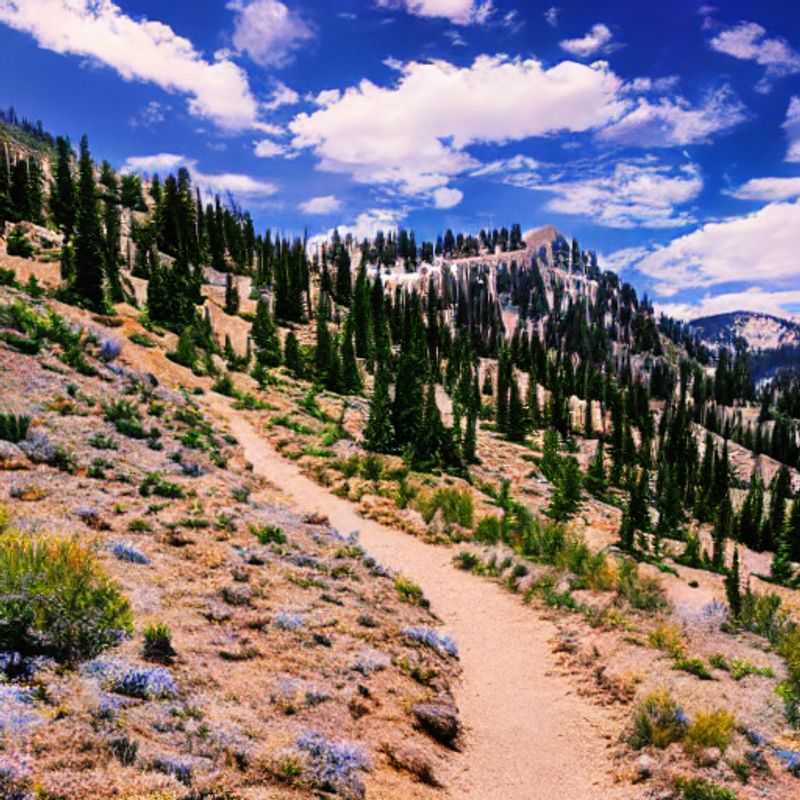
You may also like
Pacific Crest Trail Spring Break: Sun, Sweat, and Starry Nights?
Spring Break on the PCT: An Unexpected Adventure?
Trading Beaches for Backpacks: My PCT Spring Break Revelation
Is the Pacific Crest Trail Right for YOUR Spring Break? (A Nomad's Guide)
Beyond the Beach: Finding Spring Break Bliss on the PCT
Pacific Crest Trail: Sun-Kissed Trails and Starry Nights - A Spring Break Escape
Spring Break on the PCT: Adventure, Camaraderie, and the Unexpected
My Unforgettable PCT Spring Break: A Digital Nomad's Journey
From Spring Break Parties to Pacific Crest Panoramas: A Transformative Trip
PCT Spring Break: A Balancing Act of Nature and Exhilaration
Hey fellow digital nomads and foodie adventurers! Ready for a Pacific Crest Trail winter escape that's a little off the beaten, spring-break-packed path? Let's ditch the usual crowds and embrace the magic of the PCT in winter. This isn't your typical sun-drenched spring break; think crisp air, stunning snow-covered landscapes, and a whole lot of delicious, warming food to fuel your explorations.
Weather-wise, expect chilly temperatures, potentially snowy conditions, and shorter daylight hours. Pack layers, waterproof gear, and sturdy hiking boots—trust me, your feet will thank you! The beauty of the winter PCT is the solitude and the chance to witness a truly different side of this iconic trail.
Now, about the food. While the PCT doesn't have bustling restaurants along its length, preparing hearty meals becomes part of the adventure. Think warming soups, hearty stews, and energy-boosting snacks like trail mix and dried fruits. You can find resupply points in nearby towns, stocking up on groceries before hitting the trail sections. Budget approximately $30-$50 per day for food depending on your preferences.
Transportation can be arranged through a combination of shuttle services from town to trailheads and your own personal transportation for reaching the starting points. Expect to spend around $100-$200 on transportation depending on your starting and ending points and the mode of transport you choose.
The local culture surrounding the PCT is largely influenced by the communities near the trail. These towns often have a strong outdoor recreation focus with a welcoming vibe for hikers. You'll meet fellow hikers from diverse backgrounds, sharing stories and tips around campfires or in cozy local cafes. The sounds of nature – crunching snow, wind whistling through the pines – dominate, creating a peaceful and immersive experience.
While the Pacific Crest Trail itself is less about vibrant nightlife and more about the quiet beauty of nature, nearby towns offer a range of activities. It's important to remember that many of these towns are quite small, and the “nightlife” is more about cozy pubs and community gatherings than buzzing clubs.
Accommodation costs will vary greatly depending on your preference for camping (free, but requires gear) versus lodging in nearby towns (budget $50-$100 per night for a basic room or hostel).
This trip emphasizes a deep connection with nature and a slower pace of travel. It's about savoring the solitude, the stunning landscapes, and the simple pleasures of nourishing meals after a day of hiking. It's a chance to disconnect from the digital world and reconnect with yourself and the natural world, a journey of self-discovery amidst the incredible beauty of the PCT in winter.
Total estimated cost for a 7-day trip (excluding flights): $700 - $1400. This is a rough estimate and can vary significantly based on your choices. Remember, this is a journey of mindful exploration – prioritize experiences over material possessions and let the stunning beauty of the winter PCT steal your heart.
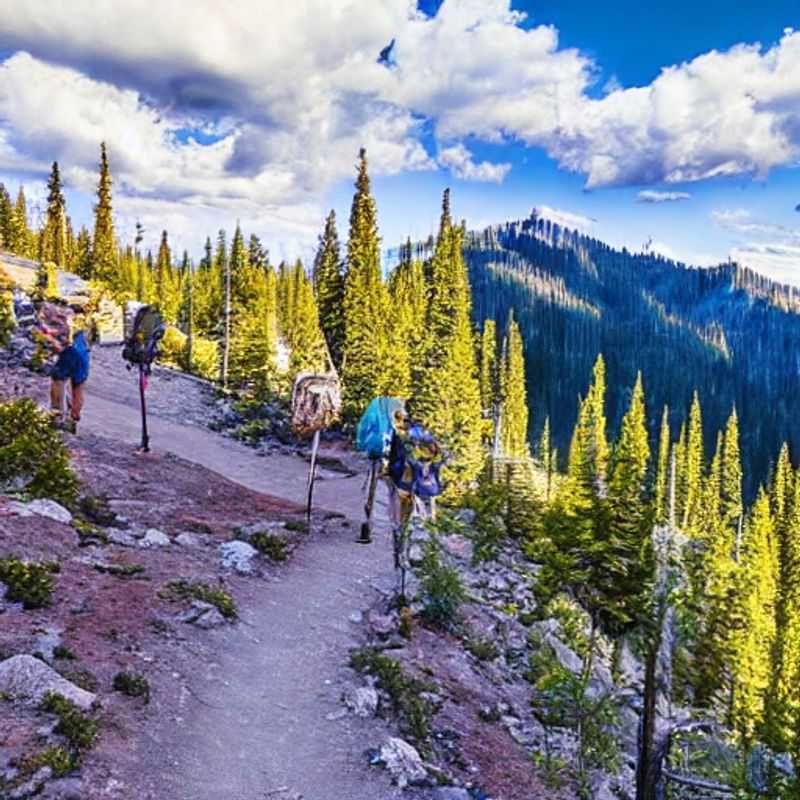
You may also like
Spring Break on the PCT: A Family Adventure? Trail Tales & Ticking Boxes
Pacific Crest Trail Spring Break: Sun, Scenery & Family Fun (or Not?)
Is the PCT Family-Friendly for Spring Break? My Honest Review
PCT Spring Break: Balancing Breathtaking Views with Little Ones' Needs
Family Fun on the PCT? Spring Break on America's Iconic Trail
My Spring Break PCT Adventure: A Family's Journey of Discovery
Beyond the Backpack: Exploring the PCT with Kids During Spring Break
Pacific Crest Trail Spring Break: A Parent's Guide to Making Memories
Spring Break on the PCT: Tips & Tricks for a Smooth Family Hike
Family-Friendly Adventures Await: Spring Break on the Pacific Crest Trail
Hello fellow digital nomads and foodie adventurers! Get ready for an unforgettable winter journey along a section of the iconic Pacific Crest Trail (PCT). While the full PCT trek is best tackled in warmer months, certain lower-elevation sections offer stunning winter landscapes and surprisingly pleasant experiences, especially for a solo backpacker like yourself.
Important Note: Winter on the PCT means snow, ice, and unpredictable weather. Thorough preparation is paramount. Check trail conditions and weather forecasts meticulously before you go. Always have emergency gear, including extra warm clothing, a reliable first-aid kit, and a communication device.
Let's talk about the foodie aspect! While the PCT itself doesn’t offer many dining options, nearby towns along the trail are your culinary hubs. Expect to find hearty, warming dishes in quaint cafes and restaurants. Think delicious soups, hearty stews, and comforting baked goods—perfect for refueling after a day of hiking. Budget about $50-$75 per day for food, depending on your choices.
Transportation to and from trailheads varies. Consider renting a car for flexibility (approximately $50-$100 per day, plus gas) or utilizing public transport, which might be more cost-effective but less flexible. You'll likely need to arrange shuttle services for certain sections (pricing varies widely, research in advance).
The Pacific Crest Trail runs through diverse landscapes, offering unique winter scenery. Expect snow-covered mountains, pine forests dusted with white, and perhaps even glimpses of wildlife. The mood is typically quiet and peaceful, with a mix of seasoned hikers and adventurous souls like yourself. While you might encounter other hikers, solitude is often a defining feature of the PCT experience.
The sound of crunching snow under your boots, the gentle whisper of the wind through the pines—these are the sounds of the winter PCT. The prevalent plants will be evergreens, their branches laden with snow. You might even catch sight of local wildlife, depending on the area; however, animal sightings are not guaranteed.
Since you're on the PCT in the winter, family-friendly attractions may be limited in accessibility. Nearby towns might offer some options such as museums or historical sites (entry fees vary), but your main focus will be the stunning trail itself. In addition to food, accommodation will add $50-$100 daily to your expenses, depending on whether you opt for camping or staying in lodges.
Regarding local traditions, you will encounter elements of Western American culture. Many towns along the PCT are known for their hospitality and appreciation for the outdoors. You can partake in local events if they happen to coincide with your trip, adding to the enriching experience. Enjoy the tranquility and beauty of nature.
Estimated total cost for a 7-day trip: This is a rough estimate and can change drastically depending on your choices, but a reasonable estimate might be $1000 - $1500 including food, accommodation, transportation, and gear. This excludes the cost of flights and any necessary gear you need to purchase.
Remember to always prioritize safety and respect the environment. Leave no trace behind and enjoy the incredible journey!

You may also like
Spring Break on the PCT: Sun-Kissed Trails or Crowded Chaos?
Pacific Crest Trail in Spring: Weighing the Pros & Cons of Shoulder Season Hiking
Dreaming of the PCT This Spring? Let's Talk Crowds and Costs!
Is Spring the Right Time for YOUR PCT Thru-Hike? A Personal Perspective
Beyond the Brochure: My Honest Take on Spring Hiking the Pacific Crest Trail
Pacific Crest Trail Spring Adventure: Beauty, Blooms, and the Budget-Conscious Backpacker
Spring Fever & the PCT: Navigating the High Season Hype
My PCT Spring Journey: A Reflection on Wildflowers, Wonderful People, and Wise Planning
Hey wanderlusters! Ready for an epic solo backpacking adventure on the Pacific Crest Trail (PCT)? Let's be clear: tackling the PCT in winter is not for the faint of heart. Spring, however, brings a thaw, but with it comes larger crowds and higher prices. So, let's plan a foodie's winter escape to avoid the peak season rush.
Picture this: crisp mountain air, snow-dusted pines, and the satisfying crunch of your boots on a trail less traveled. While the PCT stretches 2,650 miles, we're focusing on a manageable section for a winter trip – perhaps a segment in Southern California, where the weather is milder. Expect temperatures fluctuating between freezing nights and sunny days in the 40s and 50s Fahrenheit (around 4 to 10 degrees Celsius). Pack layers, waterproof gear, and sturdy hiking boots – this is crucial!
Food is a serious adventure here! Think hearty meals fueling your journey. Dehydrated meals are your best friend, saving space and weight. Budget around $20-$30 per day for food, allowing for some delicious treats at roadside diners or cafes along the way, where you'll find hearty American fare like burgers, sandwiches, and hearty soups. Local cuisine will vary regionally, so research your chosen section to discover hidden culinary gems.
Transportation is key. You'll need to get to your chosen PCT starting point. This might involve flights, rental cars, and shuttles, costing anywhere from $300-$800 depending on your origin and destination. Once on the trail, it's all about you and your backpack! Remember that campsites are generally free but require appropriate permits.
Accommodation is generally camping, so factor in the cost of camping gear if you don't already own it. Estimate around $500-$1000 for essential camping equipment if purchasing new, or less if you have existing gear.
What about the cultural side? While the PCT itself is a natural wonder, it runs through diverse landscapes and occasionally near small towns. Engage with locals – their stories are priceless. You'll find a blend of traditional Western hospitality and a growing community of outdoor enthusiasts. Expect to hear stories of survival, resilience, and the stunning beauty of the trail. Don’t forget to listen for the birdsong and the rustle of the wind through the trees – nature's soundtrack.
Popular plants along the trail include pine, fir, and various wildflowers depending on the season and elevation. You might even spot local wildlife – but maintain a safe distance from any animals you encounter.
So, the total cost for a 10-day winter PCT backpacking trip, factoring in food, transportation, and gear (assuming you need to buy gear) could be between $1500 and $2800. This is just an estimate, and your costs may vary depending on your choices. Remember to always prioritize safety and pack for all types of weather conditions.
This trip is an experience like no other. It's a journey of self-discovery, a communion with nature, and a tantalizing culinary exploration. Prepare to be captivated by the beauty of the PCT and the delicious surprises along the way!
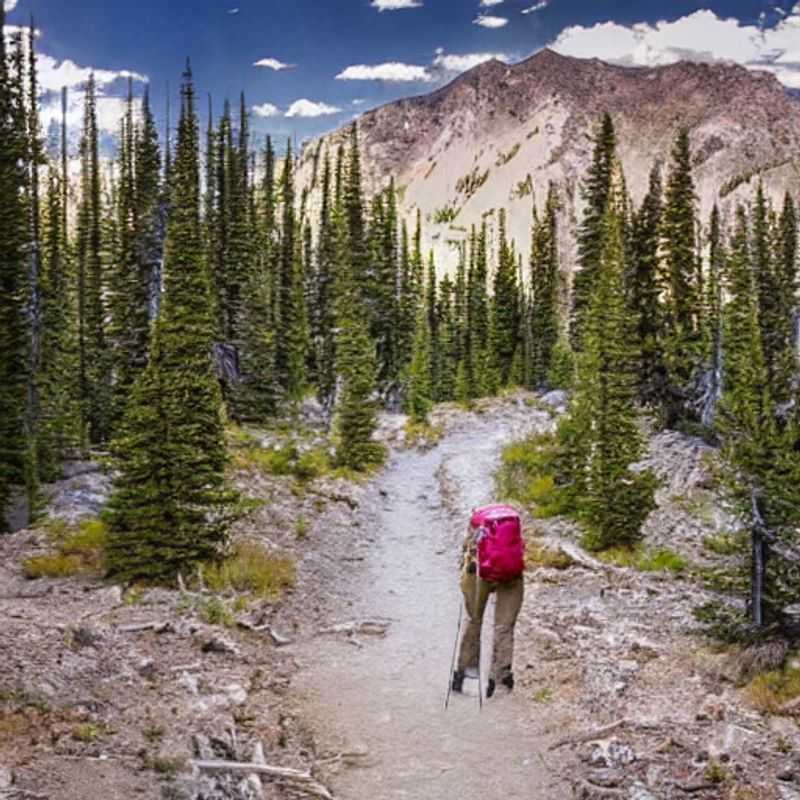
You may also like
Pacific Crest Trail Spring Break: Sun, Showers, and Stunning Views!
Is the PCT Right for Your Spring Break? A Realistic Look at the Weather
Chasing Sunshine (and Maybe Some Rain!) on the PCT This Spring Break
Spring Break Adventure: My PCT Journey and Weather Wisdom
Pacific Crest Trail in Spring: A Nomad's Guide to Weather & Wonder
Spring's Surprise: Navigating the PCT's Unpredictable Weather
PCT Spring Break: Balancing Adventure with Smart Weather Prep
My PCT Spring Break: A Tale of Sun, Showers, and Self-Discovery
Hey wanderlusters! Get ready for an epic solo backpacking adventure on the Pacific Crest Trail (PCT) during winter – a journey that’s as unpredictable as it is rewarding! Be warned: Winter on the PCT means unpredictable weather. Expect rain and cooler temperatures, so pack accordingly. This isn't your typical summer hike; it's a challenge embraced by the intrepid foodie-adventurer.
Let's talk sustenance, shall we? Finding food along the PCT in winter can be tricky. Resupply points are fewer and farther between. You might need to rely on dehydrated meals (easily found online or in outdoor stores, averaging $10-$15 per meal) supplemented with energy bars and snacks. Expect to spend approximately $50-$75 a day on food, depending on your appetite and preferences.
Accommodation-wise, expect a blend of wilderness camping and the occasional hiker shelter (free, but basic). You’ll need to bring all your camping gear: tent, sleeping bag rated for freezing temperatures, stove, etc. The initial investment can be substantial, but a good quality set can last you years. Expect a cost of $500-$1000, depending on whether you already own some equipment.
Transportation is another factor to consider. Getting to the trailhead will likely involve flights and possibly rental cars or shuttles. The cost of transportation will hugely depend on your origin location, but let's assume $500-$1000 for flights and ground transport to the trailhead.
Regarding the PCT itself, you'll be surrounded by the majestic beauty of nature. Think towering pines, granite cliffs, and maybe even some snow! The solitude can be profound; but expect to occasionally encounter fellow winter hikers—a hardy bunch who share a passion for this unique experience. Interactions will depend on personal preferences but generally, people are very friendly and helpful on long trails.
Local culture is more about the trail itself than specific towns. While you won't find bustling city life, the PCT offers a unique cultural experience focused on self-sufficiency, resilience, and the appreciation of nature's raw power. The sounds of the wind rustling through the trees, birdsong, and the occasional crackling of a campfire will be your soundtrack. You might see deer or other wildlife, but remember to keep a respectful distance.
And the weather? Well, expect anything from sunshine to snow. Layers are your best friend! Don’t forget rain gear, warm layers, and sturdy waterproof hiking boots (around $150-$300).
So, what's the grand total for this incredible winter adventure? Considering food, gear (assuming you don’t already have everything), and travel, you're looking at a potential cost of $2000-$3500 for a two-week trip (this is a very rough estimate. This excludes permits which can vary). However, the experience itself is priceless. It’s a journey of self-discovery, a testament to human resilience, and a taste of nature’s raw, untamed beauty – all seasoned with the thrill of the unexpected.
Remember, this is just a guideline. Your actual costs will vary based on your choices and preferences. But one thing's for sure: the memories you'll make on this winter PCT adventure will last a lifetime.
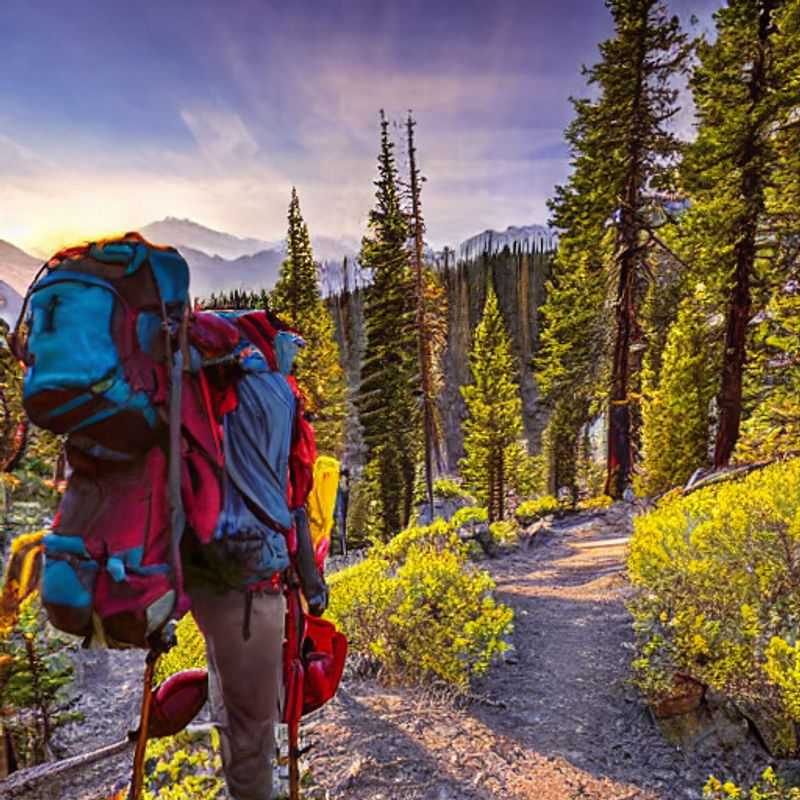
You may also like
Escape the Summer Rush: Springtime Serenity on the Pacific Crest Trail
Pacific Crest Trail Spring Break Adventure: Fewer Crowds, Stunning Views
Shoulder Season Bliss: Exploring the PCT in Spring
Is Spring the Secret Season for the Pacific Crest Trail? My Personal Discovery
Trading Beaches for Trails: A Spring Break Unlike Any Other on the PCT
Unveiling the Pacific Crest Trail's Springtime Magic: A Digital Nomad's Perspective
Beyond the Tourist Trail: Finding Solitude on the PCT this Spring
My PCT Spring Awakening: Fewer Hikers, More Wonder
Spring into Adventure: A Pacific Crest Trail Journey for the Soul
Pacific Crest Trail: Spring's Hidden Gem for the Discerning Traveler
I'm thrilled to share my insights on exploring the Pacific Crest Trail in the USA during the winter. This breathtaking stretch of wilderness offers a unique and enchanting experience, especially for the Foodie traveler seeking to immerse themselves in the natural beauty and cultural richness of the region.
While the summer months can be bustling with visitors, the spring season presents a delightful opportunity to discover the trail with fewer crowds. The crisp, invigorating air and the gradual awakening of nature create a serene and contemplative atmosphere, perfect for those seeking a more intimate connection with the great outdoors.
As you embark on your journey, be prepared to be captivated by the stunning vistas that unfold before you. The towering peaks, the meandering streams, and the vibrant flora and fauna will leave you in awe of the sheer majesty of this land. And for the Foodie traveler, the local culinary delights will be a true revelation, with opportunities to savor hearty stews, freshly foraged mushrooms, and locally-sourced produce that will tantalize your taste buds.
The local traditions and cultural practices of the region are also a fascinating aspect of the experience. From the indigenous storytelling to the rhythmic beats of traditional music, you'll be immersed in a world that celebrates the deep connection between the land and its people.
As for the cost of your adventure, you can expect to spend around $1,500 to $2,000 for a week-long journey, including transportation, accommodation, meals, and any necessary permits or fees. While it may seem like a significant investment, the memories and experiences you'll take away will be priceless.
So, my fellow Foodie traveler, pack your bags, embrace the spirit of the digital nomad, and embark on a transformative journey through the enchanting Pacific Crest Trail during the winter. Let the beauty and serenity of this remarkable landscape captivate your senses and nourish your soul.
